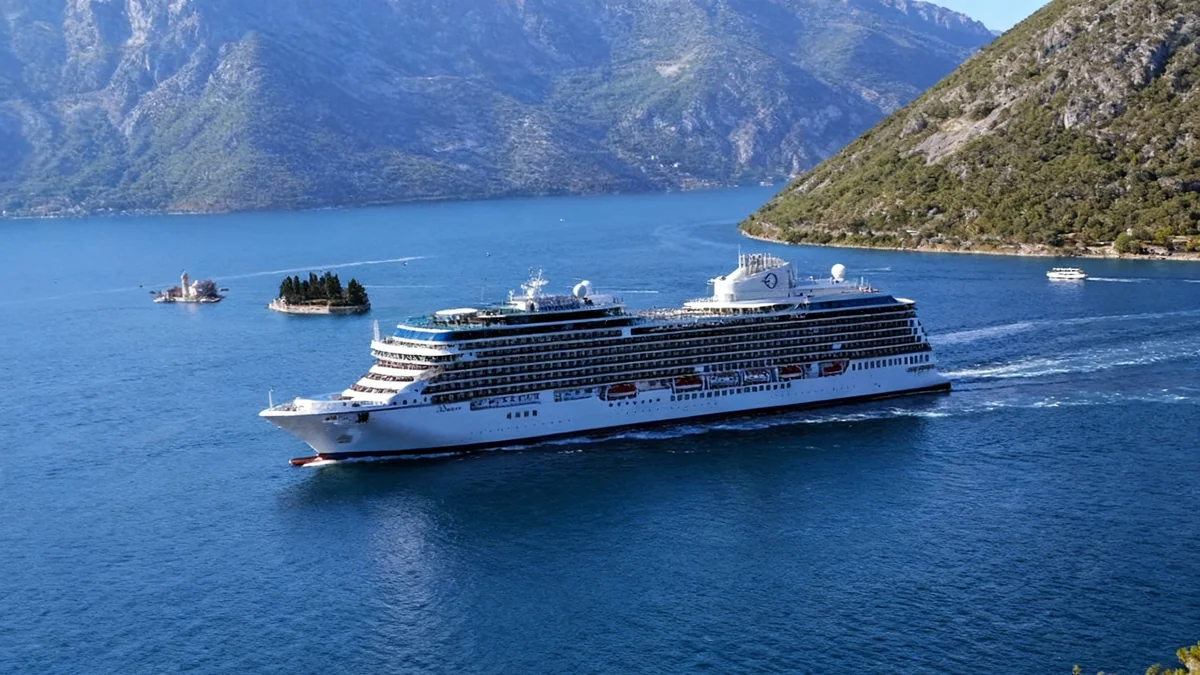A video of a Polish tourist falling into a Venice canal has gained widespread attention online, serving as a stark reminder of the challenges of navigating the city's unique layout. The incident, involving Wiktoria Guzenda, occurred while she was reportedly following directions on her phone, highlighting a common issue for visitors who rely on standard GPS applications in the historic Italian city.
Key Takeaways
- A viral video shows a tourist, Wiktoria Guzenda, falling into a Venice canal while looking at her phone.
- The incident has sparked a discussion about the unreliability of apps like Google Maps in Venice's complex environment.
- Venice's unique layout, with its sestieri (districts), narrow alleys, and numerous canals, makes digital navigation difficult.
- Travel experts recommend using physical maps or specialized local apps for more accurate directions in the city.
Details of the Incident
An Instagram video that has since gone viral captured the moment Wiktoria Guzenda, a tourist from Poland, took an unintentional plunge into one of Venice's famous canals. In the clip, she is seen walking down a set of stone steps leading directly to the water, her attention focused on her smartphone. A moment later, she loses her footing and falls into the canal.
A text overlay on the video humorously stated, "When Google Maps says 'go straight' but you're in Venice." Following the fall, Guzenda was shown with a scraped leg, an injury likely sustained from the sharp edges of the steps or marine life attached to the canal walls. The incident, while resulting in minor injury, has opened up a larger conversation among travelers about over-reliance on digital navigation tools in unconventional urban landscapes.
Social Media Reaction
The video prompted a wide range of reactions online. Some viewers expressed sympathy, noting how easily such an accident could happen. Others commented on the importance of situational awareness, with one user writing, "Maybe stop blindly following a gps and actually look around and use your brain." This divide in opinion underscores the ongoing debate about the role of technology in modern travel and personal responsibility.
Why Standard GPS Fails in Venice
The tourist's mishap is a practical example of a well-known problem for visitors to Venice: standard GPS applications like Google Maps are often unreliable. The city's design, which predates modern mapping technology by centuries, presents several unique challenges that algorithms struggle to process accurately.
The Sestieri System
Unlike most cities that use a simple street name and number system, Venice is divided into six historic districts known as sestieri. Within each sestiere, building numbers are assigned in a seemingly random, winding pattern that often follows the district's perimeter. This system makes it extremely difficult for GPS to pinpoint precise locations or provide logical, sequential directions.
A Labyrinth of Alleys and Canals
Venice is composed of 118 small islands separated by canals and linked by over 400 bridges. Many of its "streets" are narrow pedestrian alleys, known as calle, some only a few feet wide. Digital maps frequently misinterpret these passages or fail to distinguish between a walkable path and a dead end at the water's edge.
"Google Maps frequently directs tourists to routes that simply don't exist or are blocked by canals. Many visitors find themselves standing at the edge of a canal with no bridge, exactly where Google Maps said they should turn," explains the travel guide service Tour Leader Venice.
Variable Water Levels and Impassable Bridges
Another factor that digital maps cannot account for is the acqua alta, or high tide, which can flood low-lying walkways and squares, rendering a mapped route impassable. Furthermore, some bridges depicted on maps may be private or too steep for luggage, details that are not typically included in standard navigation data.
Venice by the Numbers
- Islands: 118
- Canals: Over 150
- Bridges: Approximately 400
- Districts (Sestieri): 6
This complex infrastructure makes Venice one of the most challenging urban environments for digital mapping services to navigate accurately.
Safer Navigation Strategies for Venice
Given the limitations of GPS, travel experts and experienced visitors suggest a multi-faceted approach to finding your way around Venice. Relying on a single digital tool is often a recipe for frustration or, as seen in the recent video, potential mishaps. Here are some recommended alternatives:
1. Use a Physical Map
A high-quality paper map remains one of the most reliable tools for navigating Venice. Many are available from tourist offices or newsstands (edicole) and are specifically designed to highlight major landmarks, vaporetto (water bus) stops, and key bridges. Using a physical map encourages travelers to pay more attention to their surroundings.
2. Follow the Signs
The city has a system of yellow signs posted on buildings that point toward major landmarks like Piazza San Marco (St. Mark's Square), Ponte di Rialto (Rialto Bridge), and the Accademia bridge. Following these signs is often the most straightforward way to navigate between key areas.
3. Specialized Navigation Apps
While Google Maps may struggle, some apps are specifically designed for Venice's unique layout. Applications like "WallaMe" or local transit apps often provide more accurate information on vaporetto routes and walking paths that are verified by locals.
4. Embrace Getting Lost
Perhaps the best advice for exploring Venice is to allow yourself to get lost. The city is entirely pedestrian-friendly and safe. Wandering through its labyrinthine alleys is one of the most rewarding ways to discover hidden squares, charming cafes, and authentic local life away from the main tourist crowds. As long as you know the general direction of a major landmark, you can always find your way back.
The Broader Lesson for Modern Travelers
The incident in Venice serves as a cautionary tale about the pitfalls of over-reliance on technology while traveling. While smartphones and GPS are invaluable tools, they should complement, not replace, situational awareness. Looking up from the screen to observe one's surroundings is not just a safety measure—it is essential to the experience of travel itself. In a city as visually stunning and historically rich as Venice, the journey through its winding streets is as much a part of the destination as the landmarks themselves.





